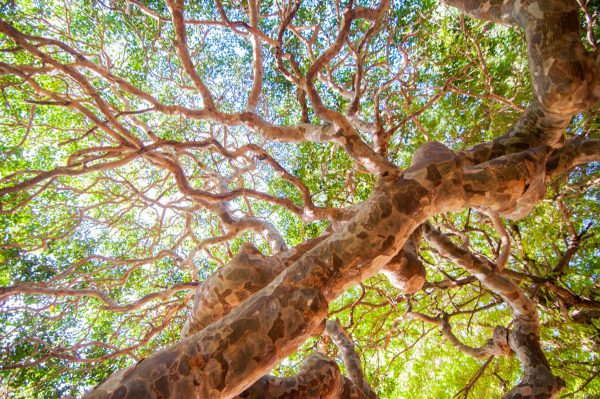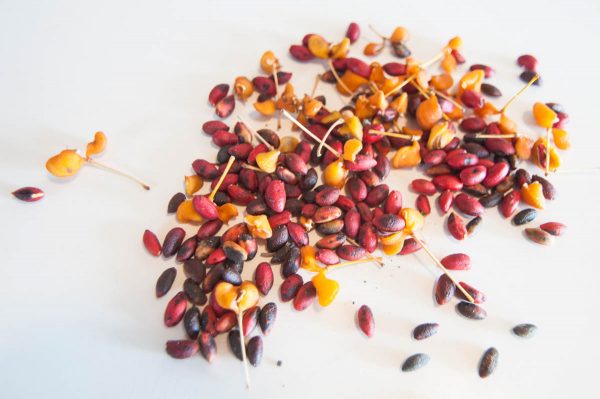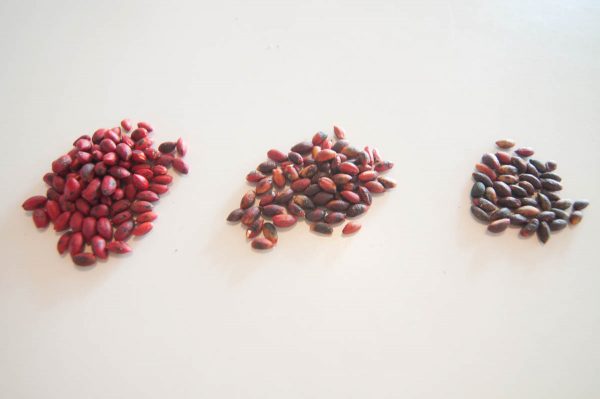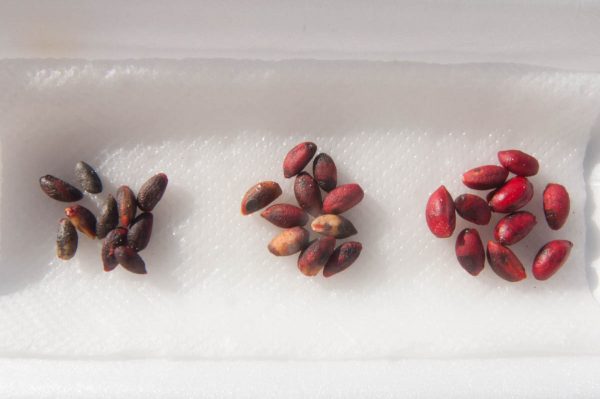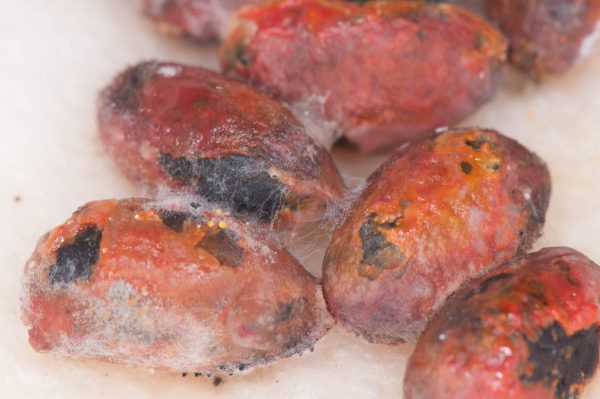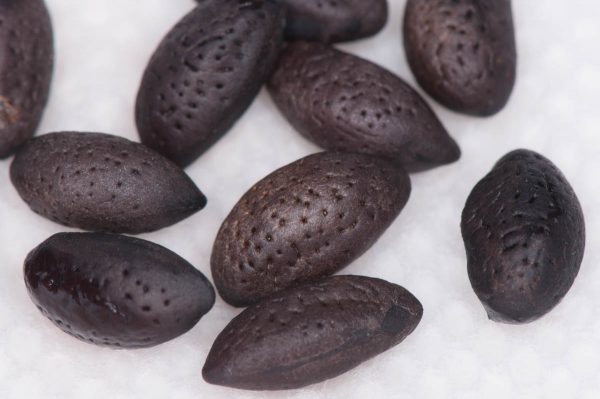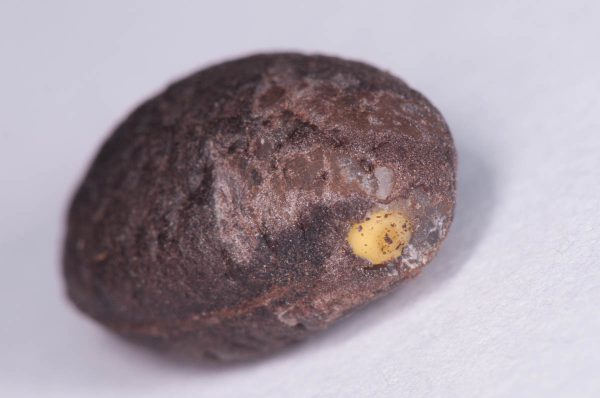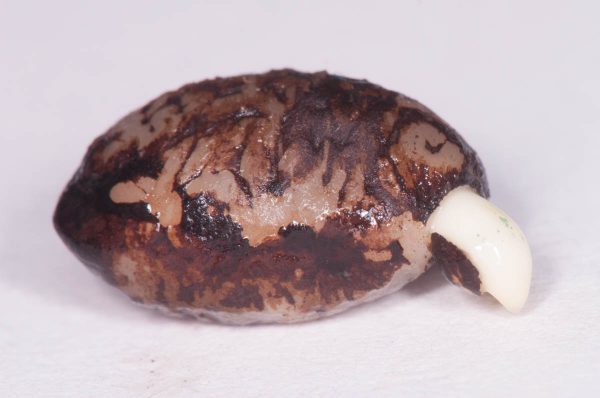The Lignum Vitae, also known as Gaïac, is a beautiful tree native to the Caribbean that is now endangered due to overharvesting, primarily for its extremely hard wood. This slow-growing tree has beautiful blue flowers and intricately-packed branches in its wide crown. It is sometimes described as a small tree, but this may be primarily because so few old, large trees are left.
In order to promote this wonderful heritage tree, I have been experimenting in order to develop best practices for germinating seeds, growing seedlings and transplanting them into permanent locations. Here are some images and notes about the germination process.
Small, orange fruits contain two seeds each. The seeds themselves are covered in a red, fleshy coating called a sarcotesta.
I started by separating seeds by the presumed age, based on how much of the sarcotesta remained.
I attempted germination by keeping them in damp paper towels.
After a week or so, the seeds retaining a sarcotesta began to mold and none germinated, even after several weeks.
Seeds without a sarcotesta (because it had worn off before I collected them, or because I had removed it) did not mold, but they didn’t germinate, either.
It turns out, the key is to remove the black casing around the seed. This time-consuming, but not too difficult to do with a pocketknife. To make the process easier, it seems that exposing the radicle, the embryonic first root, is all that is necessary, so one can scrape off just the casing around the rounder end.
Prepared this way, the seeds germinate surprisingly quickly, usually in just a couple days. So far, the best process I have found is to soak the seeds in water for a day or so: this helps remove any fleshy sarcotesta so the seeds won’t mold. It may also help kickstart the germination process. Once the seeds are clean, I scrape the round end to expose the radicle and leave them in moist paper towels in a warm room. So far, the majority of seeds prepared this way seem to be germinating.
(I got some very useful info from this 1966 article: Seed Germination and Seedling Growth of Guaiacum sanctum)

